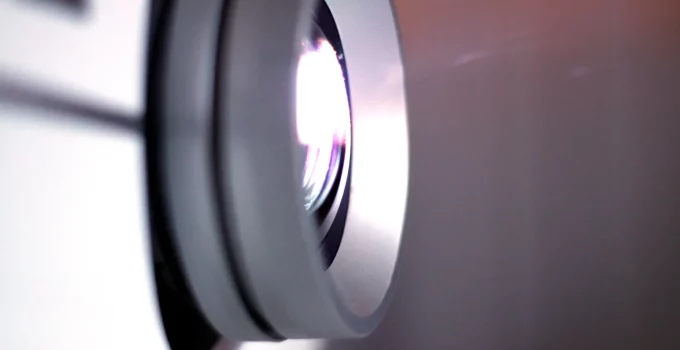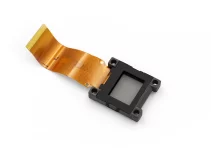How important is it to know about the distinction lux vs lumens in a projector? Is lux a spec we should care about or is it only the lumens volume that we should be informed of?
We can say for sure that lumens is the spec that each manufacturer mentions, it’s one of the first specs we look at when shopping for a projector. Just based on this spec, if we know how many ANSI lumens a projector has, we can approximate just how bright it is.
For example, we need more lumens, above 2,500-3,000, if we want to display in ambient light. If we’re just watching in dark rooms, the lumens volume can be well under 2,000.
You might have noticed that I didn’t mention that a projector needs to have a certain number of lux. That’s because lux is not a relevant spec at all.
Table of Contents
Lux vs Lumens Projector: Lumens is the International Standard
The international standard for measuring projector brightness is ANSI lumens. This is the recognized brightness standard.
Lux, LED lumens or light source lumens are not measurements recognized by the international standard.
If that’s the case, what about lux? Is it a necessary feature to know about, is it mentioned anywhere? Hint: it’s not necessary for the devices we’re talking about.
Reputable manufacturers will measure the brightness of their models in ANSI lumens.
If a manufacturer measures brightness in lux and gives no information about lumens, you’re definitely looking at a manufacturer that should absolutely know that the standard is ANSI lumens and still doesn’t provide the needed information.
What we can clearly say in our lux vs lumens projector debate is that they’re both a measure related to brightness.
However, when it comes to projectors, lumens is the spec that reputable manufacturers offer and the one by which we try to understand how bright a model really is when compared to others.
Lumens are an especially essential spec to check out when we’re shopping for data projectors or when we’re searching for the best projectors for daylight. If you’re looking for models to use in the dark, you don’t absolutely need a device with over 3,000 lumens. A one that has a brightness of 2,000 lumens or under can be more than enough.
Lux vs Lumens Projector: What Are These Measurements?
The direct correlation between these two measures related to brightness is this: 1 lux is equal to 1 lumen per square meter. Thus, lux is metric, it’s measured by the square meter.
What is lux?
Lux is the number of dots that fall on a surface. One lux of light is a measure of light density.
This is a way to measure the total amount of light that falls on a surface. Thus, it’s a measure of illuminance/illumination.
Greenbusinesslight.com states: 1 lux is equal to the illumination of a 1 meter square surface that is 1 meter away from a single candle.
Since it’s a measure of density, the closer to the light source the higher the lux reading.
Lumens indicate the brightness on the screen. Therefore, lumens is the measurement that we end up reading about and comparing when we’re buying a projector.
Lux is not commonly mentioned as a measurement for the brightness of projectors but it can definitely be used to measure natural light conditions.
For example, direct sunlight can register between 32,000 and 100,000 lux, ambient daylight can have between 10,000 and 25,000 lux, overcast daylight decreases at 1,000 and sunset and sunrise register 400 lux. On the other hand, moonlight only has 1 lux.
What is lumens?
Lumens is the total number of dots released from the light source (lamps, LEDs, tubes). That’s why this is the spec that measures the brightness of a projector.
How many lumens a projector has is what interests us in the end and the numbers that each manufacturer provides right at the top of any list of specs.
While lux is a measure of illuminance, lumens is a measure of luminous flux. It indicates the total amount of light emitted in all directions.
When it comes to projectors, we are more interested in the total amount of light emitted on the screen because that’s where the image is formed and where its brightness matters. Thus, we care about lumens above lux.
To gain an even better understanding, you can also check out my article on do lumens matter for projectors.
Lux vs Lumens: When Each Is Used
To better understand the clear difference between the two measurements, there’s a graph that you can find at waveformlighting.com.
There, lumens are illustrated as dots of light that become more and more dispersed, reaching a bigger and bigger surface, the further they travel from the light source.
On the other hand, lux is illustrated as a single, horizontal, thick block of light that shines its brightest where it’s closer to the light source and becomes practically nonexistent the further away we are from the light source.
Lux decreases as the distance from the light source increases, while lumens should have a constant number.
Lux matters if we want to know how bright a surface appears.
For example, it’s an important measure when taking photographs. If there’s not a sufficient lux level, it can be difficult to take good photographs. In photography, it can be the result of multiple light bulbs as well as daylight being mixed in.
Now you can more clearly see why it’s something not mentioned when it comes to projectors.
ANSI lumens is the measure for brightness. This is the measure for the light that is emitted by a single light source in all directions, whether we’re talking about lamp-based, LED or laser projectors.
Thus, the actual thing that matters to us from this lux vs lumens projector debate is that ANSI lumens is the measurement that clearly indicates the brightness of a projector, recognized by the international standard for measuring brightness, the spec that tells us if it can be used in daylight, ambient light or if it’s only suitable for dark rooms.




